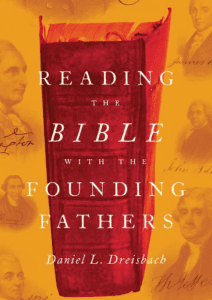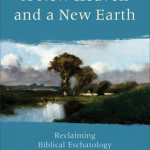 Chapter Three of Peter Enns’s new book The Evolution of Adam: What the Bible Does and Doesn’t Say about Human Origins looks at the relationship between the stories of origins contained in the Hebrew Scriptures – our Old Testament – and the stories of origins in the surrounding Ancient Near East (ANE) cultures.
Chapter Three of Peter Enns’s new book The Evolution of Adam: What the Bible Does and Doesn’t Say about Human Origins looks at the relationship between the stories of origins contained in the Hebrew Scriptures – our Old Testament – and the stories of origins in the surrounding Ancient Near East (ANE) cultures.
Before the mid-nineteenth century it was possible to read the Old Testament in isolation and marvel at the creation stories in Genesis, to believe that they were a unique special perfect revelation delivered to Moses during the sojourn in the wilderness. A multitude of discoveries over the last two centuries has challenged this view in deep and profound ways.
Among the most important challenges are the tablets that have been found dating from the mid-seventh century BCE and earlier, in fragments much earlier, that relate creation myths and flood myths of Mesopotamia, both Akkadian and Sumerian. I am an amateur here, but have on my shelf books like Samuel Noah Kramer’s The Sumerians and Stephanie Dalley’s translations Myths From Mesopotamia and several others. The ANE stories are both obviously different from and unnervingly similar to the stories of creation, flood, and re-creation in Genesis 1-11. Of particular significance is the evidence that these ANE myths have their origins in stories dating far earlier than Genesis in the form we have it in our bibles.
The study of the ANE texts is taken by some, both within the church and outside the church as a challenge to the inspiration of Genesis in particular, and more generally to the validity of scripture as a divine book of any sort. The implications of the discoveries in ANE archaeology are either “worldly wisdom” to be resisted or one more nail in the coffin of an outdated religious superstition. Both these extremes are misguided and damaging. Enns takes us in a different direction:
Perhaps a better way of thinking about the issue is to introduce the phrase “genre calibration.” Placing Genesis side by side with the primordial tales of other ancient cultures helps us gain a clearer understanding of the nature of Genesis and thus what we as contemporary readers have a right to expect from Genesis. Such comparisons have made it quite clear that Israel’s creation stories are not prepared to answer the kinds of questions that occupy modern scientific or even historical studies. Genesis is an ancient text designed to address ancient issues within the scope of ancient ways of understanding origins. (pp. 35-36)
This is an important point in the way Enns is working through the question of Adam. In order to more fully understand the message and purpose of Genesis it helps if we understand the ancient context of Genesis.
What do you make of the ANE tales and their relationship to Genesis?
In this chapter Enns works through the relationship between Genesis 1 and Enuma Elish, the assumption of monolatry as opposed to monotheism in parts of the Old Testament including Genesis 1, Exodus, and some of the Psalms, the relationship between the Flood in Genesis 6-8 and Gilgamesh and Atrahasis, and finally Genesis 2-3 and the relationship between Adam and Atrahasis. The point is not that the ancient Israelites appropriated or borrowed the ANE myths, but that they all arose from the same cultural milieu with the same kinds of common assumptions about origins.
Genesis 1 and Enuma Elish. There are a number of significant parallels between Genesis 1 and Enuma Elish – among them order out of chaos; darkness preceding creation; light existing before the sun, moon, and stars, a barrier is formed to keep the waters above where they belong. The sequence of creation is similar. In an endnote Enns also points out that in Enuma Elish creation concludes with the building of a temple. Some see a parallel in the cosmos as God’s Temple – John Walton in The Lost World of Genesis One describes such a view.
The first element in the list above may seem strange to some. It is common to look at Genesis 1:1 “In the beginning God created the heavens and earth” and to assume that this refers to creation out of nothing. But this is not in the text and Walton’s commentary on Genesis gives a good discussion (p. 67-71). Enns prefers something like the NRSV “In the beginning when God created the heavens and earth, the earth was a formless void,” while Walton argues against this construction. But both agree that the creation refers to bringing order out of chaos – Walton sees the order referring specifically to function. A doctrine of creation out of nothing has to come from other texts or theological insights.
It isn’t necessary – or even widely accepted these days – to draw a causal connection between Genesis 1 and Enuma Elish. There are, Enns notes, similarities between Genesis 1 and the Canaanite story of Baal and Egyptian Memphite Theology as well.
Scholars are no longer eager to draw a direct line of dependence from Enuma Elish to Genesis. Instead the two texts participate in a similar conceptual world concerning the nature of beginnings. Enuma Elish is older than Genesis and so sets the stage for Genesis 1. But the similarities between Genesis and Enuma Elish are due to a matrix of cultural factors that are bigger than both. (p. 40)
The conceptual world framing the ANE understanding of origins allows us to identify the polemical function of Genesis 1. Among these is the claim that God alone created the world establishing order out of chaos. The deep (tehom referring back to the goddess Tiamat vanquished in a divine battle in Enuma Elish) is depersonalized, as are the sun, moon, and stars. It is not that the ancient author and audience had a better understanding of material origins than the surrounding cultures – but they had a better understanding of God.
The polemical thrust does not isolate Genesis from its environment. Rather, the polemic is effective only because of the shared cultural/religious categories. The Israelites were not on a “higher plain” with a more “accurate” (modern) cosmology. Rather, in a world full of stories about gods’ creating through violence, the Israelites bucked the trend by ascribing to their one God a complete and utterly effortless act of ordering creation. … The theological message in Genesis 1 was that their God is not like the other gods. He alone can claim the title of “Creator,” which makes him alone worthy of allegiance and worship. (pp. 42-43)
Monolatry vs. Monotheism. This brings us to a second point. The cultural world of the ancient Near East assumed a pantheon of gods. Many of the myths including Enuma Elish are framed as divine conflict. The realization that there is one and only one God was not a shift that the Israelites made quickly. Much of the Old Testament is cast in a context of an assumed pantheon of gods. It is not that YHWH is the only god – but that he is Israel’s God, the God over all other gods, and the only one worthy of worship. The Israelites in particular were to have but one God. They were to be monolatrous. Genesis 1 speaks into this context where the original audience (and presumably the author) simply assumed there was a pantheon of gods.
The assumption of “other gods” can be seen most clearly in Exodus and in the Psalms. In fact Enns suggests that Exodus in particular is a story of monolatry and supremacy not monotheism. This is a topic touched on as well, although not extensively, in his commentary on Exodus. As examples:
The plague battle in Exodus 7:8-10:29 can, at least in part, be seen as a battle between Yahweh and the Egyptian pantheon with Israel’s God, of course, always coming out on top.
The culmination of the battle in final plague (Exodus 11:1-12:29) makes the reference more explicit. Exodus 12:12 says: “On that same night I will pass through Egypt and strike down every firstborn of both people and animals, and I will bring judgment on all the gods of Egypt. I am the LORD.”
The first two commandments assume monolatry. Exodus 20:3-6 “You shall have no other gods before me. You shall not make for yourself an image in the form of anything in heaven above or on the earth beneath or in the waters below. You shall not bow down to them or worship them; for I, the LORD your God, am a jealous God.” God is telling his people that he, Yahweh, is a jealous god and he will not share Israel’s allegiance with any other god. But this only makes sense if the author and audience of the original text assumed that many gods existed and that they had a choice.
And Enns lists several more examples from the Psalms:
86:8 Among the gods there is none like you, Lord; no deeds can compare with yours.
95:3 For the LORD is the great God, the great King above all gods.
96:4 For great is the LORD and most worthy of praise; he is to be feared above all gods.
97:9 For you, LORD, are the Most High over all the earth; you are exalted far above all gods.
135:5 I know that the LORD is great, that our Lord is greater than all gods.
The Old Testament is not uniformly monolatrous. There are specific examples of monotheism as well. And of course the assumption of “gods” does not mean that the other gods were real, that they were or are powers to be reckoned with. But the allusions in scripture do suggest that the ancient Israelites lived in a time and culture when they were assumed to be real. The text of the bible we have reveals God’s interaction with his people shows a developing understanding of who God is, what it means to be his people.
The Theology of Genesis 1. Enns then summarizes this discussion of Genesis 1 and its literary and cultural context:
The theology of Genesis 1 becomes clearer when we read it in its ancient literary-religious context. For those who wish to see support in Genesis for modern science, it may seem a bit of a letdown that God is “only” said to have tamed a preexisting chaos, for example. After all, if we were truly almighty, would he not create out of nothing? But in the ancient world of the Israelites, this was not an active question. In that world the theology of a chaos-tamer working solo, commanding the elements to line up, was counterintuitive and set Israel apart theologically. Genesis 1 is not in any way a modern scientific statement, but an ancient religious one. It drew on the thought categories available at the time to create a powerful statement within its own context for the uniqueness of Israel’s God and his worthiness to be worshiped. (p. 45)
Genesis 1 is the inspired opening to Israel’s story as compiled and told in their context. The theological message is clear – and has been clear since it was originally written. God and God alone is responsible for the creation of the world. But the story does not answer modern scientific questions about creation – it assumes ancient ideas about creation. The questions answered don’t relate to the mechanism of creation but are more personal: “Who created the world?” and “Who are we?” The answer is God alone created the world and we are his representatives in the world – his images.
Is is appropriate to allow a better understanding of ANE literature, language, and culture to revise our interpretation of Genesis?
Does the inspiration of scripture require that we assume that God would correct all mistaken assumptions of the original author and audience?
If you wish to contact me directly you may do so at rjs4mail[at]att.net.
If interested you can subscribe to a full text feed of my posts at Musings on Science and Theology.











